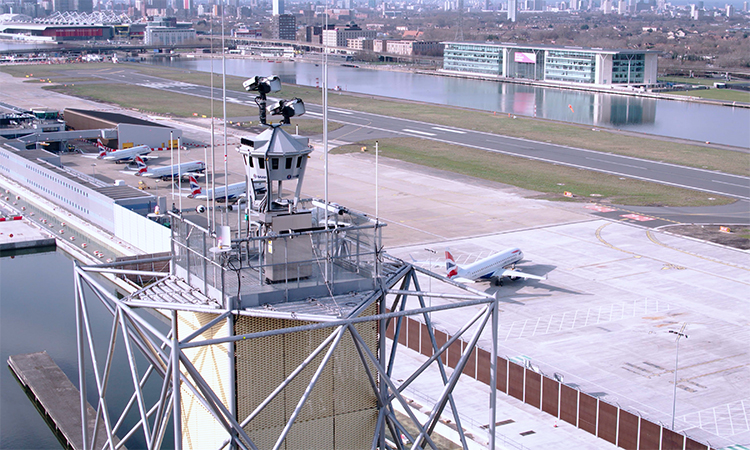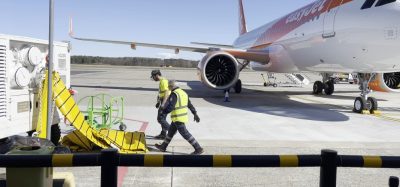London City Airport now fully controlled by remote digital ATC tower
- Like
- Digg
- Del
- Tumblr
- VKontakte
- Buffer
- Love This
- Odnoklassniki
- Meneame
- Blogger
- Amazon
- Yahoo Mail
- Gmail
- AOL
- Newsvine
- HackerNews
- Evernote
- MySpace
- Mail.ru
- Viadeo
- Line
- Comments
- Yummly
- SMS
- Viber
- Telegram
- Subscribe
- Skype
- Facebook Messenger
- Kakao
- LiveJournal
- Yammer
- Edgar
- Fintel
- Mix
- Instapaper
- Copy Link
Posted: 30 April 2021 | International Airport Review | No comments yet
Following intensive testing and live trials, LCY has become the first major international airport in the world to be fully controlled by a remote digital tower.
London City Airport (LCY) has announced that it has become the first major international airport in the world to be fully controlled by a remote digital air traffic control (ATC) tower, following intensive testing and live trials of the revolutionary technology during the nationwide lockdown as a result of the COVID-19 pandemic.
All flights on LCY’s summer schedule are being guided to land or take off from the heart of the London Docklands business district by air traffic controllers based 115km away at NATS’ air traffic control centre in Swanwick, Hampshire, using an ‘enhanced reality’ view supplied by a state-of-the-art 50m digital control tower.
The technology marks a step-change in global air traffic management (ATM) and will help the airport to meet an expected surge in demand for flying during the summer season as nationwide COVID-19 travel restrictions are eased from 17 May 2021.
The multi-million-pound investment in the proven remote digital technology marks a major milestone in London City Airport’s investment in its future, following the completion of new aircraft stands and a full-length parallel taxiway, which became operational in December 2020.
Alison FitzGerald, Chief Operating Officer at London City Airport, said: “We are immensely proud to become the first major international airport to adopt this pioneering technology. This investment in smart infrastructure will help us to meet future growth in passenger demand, improve air traffic management and give us enhanced capability as aviation bounces back from the pandemic. It is also a demonstration of the commitment to innovation in the UK aviation sector and to being at the forefront of defining the future of flight. Since going operational at the end of January 2021, the technology has worked really well and is ready for the expected increase in demand for flights as Britons book their well-deserved summer getaways.”


Credit: London City Airport
Juliet Kennedy, Operations Director at NATS, said: “This is the UK’s first major digital control tower and represents a significant technological and operational achievement, especially against the backdrop of COVID-19. Digital tower technology tears up a blueprint that’s remained largely unchanged for 100 years, allowing us to safely manage aircraft from almost anywhere, while providing our controllers with valuable new tools that would be impossible in a traditional control tower.”
Sixteen high-definition cameras and sensors mounted on the mast capture a 360-degree view of the London City Airport airfield. This is relayed through super-fast fibre connections to a new control room in NATS’ air traffic control centre in Swanwick. A dedicated team of controllers use the live footage, an audio feed from the airfield and radar information to instruct aircraft movements in and out of the airport.
The live feed, transmitted through independent secure fibre networks, is displayed on 14 HD screens in the Swanwick control room to provide a panoramic moving image. This can be overlaid with digital data to provide an ‘enhanced reality’ view.
Information such as call signs, altitude and the speed of all aircraft approaching and leaving the airport, weather readings and the ability to track moving objects can all be included in this single visual display. Pan-tilt-zoom cameras can magnify images up to 30 times for close inspection.
The digital technology significantly improves controllers’ situational awareness, enabling quick and informed decisions to improve safety and operational efficiency.
London City Airport’s digital control tower was completed in 2019 and has been through an extensive period of testing before becoming fully operational. The 30-year-old analogue tower, which was due a significant upgrade, will be redeveloped as part of the airport’s modernisation programme.
Related topics
Air traffic control/management (ATC/ATM), Aircraft, Airside operations, COVID-19, Machinery, New technologies, Passenger volumes, Runways and pavements, Safety


















